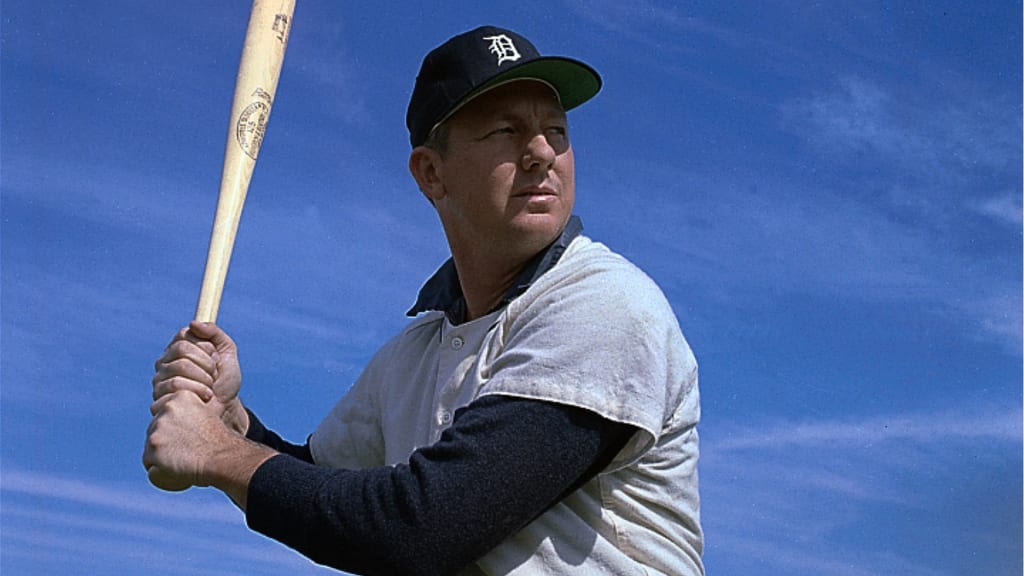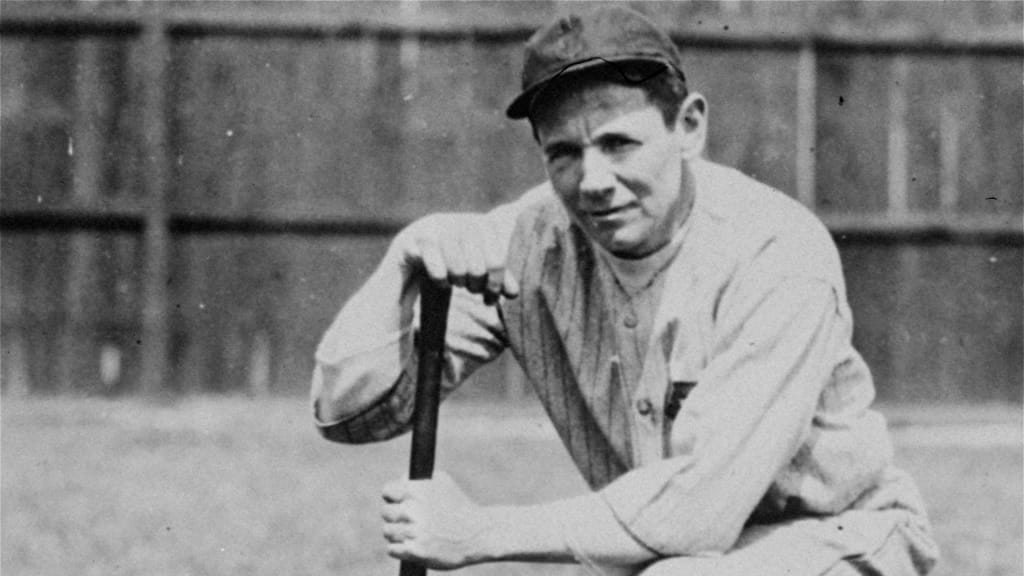
No one loves a good debate quite like baseball fans, and with that in mind, we asked each of our beat reporters to rank the top five players by position in the history of their franchise, based on their career while playing for that club. These rankings are for fun and debate purposes only. If you don’t agree with the order, participate in the Twitter poll to vote for your favorite at this position.
Here is Jason Beck’s ranking of the top five right fielders in Tigers history. Next week: DH
1) Al Kaline, 1953-74
Key facts: 18-time All-Star, 10-time Gold Glove Award winner, youngest AL batting champion in history, inducted to Hall of Fame in 1980
Of course Mr. Tiger tops this list. Not only did his 22-year career in Detroit put him alongside Ty Cobb as one of the most accomplished players in franchise history, he finished a home run shy of becoming one of a dozen players in Major League history with 3,000 career hits and 400 homers. He was the first player in the illustrious history of the Tigers to have his number retired.
Signed the day after he was graduated high school in Baltimore, Kaline was in a Tigers uniform and on the roster a week later, as was the rule at the time for players who received a large signing bonus. What wasn’t expected was how quickly he would adapt to the big leagues. His .340 average as a 20-year-old in 1955 made him the youngest-ever American League batting champion (one day younger than Cobb), and he was a runner-up for AL MVP. That early greatness weighed on him for the next two decades, but he somehow managed to meet the challenge. He had eight more .300 seasons, including a .313 clip at age 37 in 1972 to lead the Tigers to the playoffs.
If Wins Above Replacement existed in Kaline’s time, he would have ranked in the top 10 among AL hitters over 11 seasons. He did all this without a 30-homer year, and with just three seasons over 100 RBIs. He played at least 100 games in 20 of his 22 seasons, and he had an OPS+ of at least 107 in all but three.
When the situation grew tighter, Kaline's discipline was greater. In 1955, he batted .360 with runners in scoring position, with almost as many home runs (eight) as strikeouts, and three times as many walks (28). With a runner on third and less than two outs, he fanned just twice in 54 plate appearances, compared with six sacrifice flies.
Kaline passed away on April 6 at the age of 85.
2) Harry Heilmann, 1914, '16-29
Key facts: Four-time AL batting champion, inducted to Hall of Fame in 1952
Though right field at Tiger Stadium wasn’t particularly deep thanks to the upper-deck overhang, Tigers history is deep enough in right fielders to boast three Hall of Famers, allowing greats like Heilmann to get overlooked. With a nickname like Slug, he had to hit. Heilmann won four batting titles in a seven-year span, batting .393 or better in all of them. They’re the four best averages in a season by a Tiger not named Cobb. Heilmann’s .403 average in 1923 was the last .400 season in the AL until Ted Williams hit .406 in 1941.
Long before Williams gained fame for playing the second game of a doubleheader and putting his .400 season on the line, Heilmann took a similar mentality. He went 3-for-3 in the second game of a doubleheader to hit .393 in '25, four points better than Tris Speaker. Two years later, Heilmann went 7-for-9 in a season-ending twin-bill to hit .398, six points better than Al Simmons. Heilmann’s .342 career average ranks 12th all-time.
After retirement, Heilmann spent 17 years as a Tigers broadcaster on radio and television.

3) Sam Crawford, 1903-17
Key facts: MLB all-time leader with 309 career triples, inducted to Hall of Fame by Veterans Committee in 1957
A century before Mike Ilitch helped rebuild the Tigers with big free-agent signings, Detroit made Crawford one of the first stars to jump from the National League to the upstart AL. He actually signed with the Tigers and the Reds for 1903, but his deal with Detroit came first.
The Tigers replaced one eventual Hall of Famer with another when Heilmann replaced Crawford in right field. Only Crawford was alive to see his eventual induction to Cooperstown, recognized by the Veterans Committee after lobbying from Cobb for his work as one of the most dangerous hitters of the dead-ball era. Crawford’s 309 career triples stand as a Major League record that might never be broken; no current big leaguer has 90. He led the AL in triples six times, home runs and total bases twice, doubles once and RBIs three times. His league-leading 16 home runs with the Reds in 1901 included 12 inside-the-parkers, also a record. He never led the league in hitting, but he batted .300 in eight of his 15 seasons as a Tiger.
4) Kirk Gibson, 1979-87, '93-95
Key facts: 1984 ALCS MVP, two-homer game in Game 5 of 1984 World Series
Gibson was never an All-Star, Gold Glove winner or Silver Slugger in Detroit. His league MVP Award happened in his first season after signing with the Dodgers. Still, his feats in big games make his place in Michigan sports lore secure, from his upbringing in Waterford to his two-sport stardom at Michigan State. He’ll forever be remembered for his two home runs in Game 5 of the 1984 World Series to earn the Tigers their first title in 16 years. Seven of Gibson’s 195 regular-season home runs with Detroit were walk-off shots, including two as a pinch-hitter. He also had a pair of inside-the-park home runs.
Gibson put together a 125 OPS+ over 12 seasons as a Tiger and had two seasons with over 5.0 bWAR. He was also a notorious tough at-bat with high walk totals through his prime years.
5) Jim Northrup, 1964-74
Key fact: Hit go-ahead triple in Game 7 of 1968 World Series
Like Gibson, Northrup was born, raised, drafted and played in Michigan. However, Northrup was a small-town hero, from high school ball in tiny St. Louis to college ball at equally tiny Alma College. The former small-college All-American quarterback turned down NFL offers to sign with the Tigers, then embarked on an underrated 11-year career in Detroit. He’ll forever be remembered for hitting Bob Gibson’s pitch over Curt Flood’s head at Busch Stadium to give the Tigers the lead in Game 7 of the 1968 World Series. But with a team-best 90 RBIs that season, he was good enough that manager Mayo Smith moved Mickey Stanley from center field to shortstop for the World Series so that he could put Northrup and Kaline in the same lineup.
Honorable mentions: Rocky Colavito, Magglio Ordonez, Bobby Higginson
Colavito and Ordonez would warrant spots in the top five had they spent more time with the club. Colavito’s 45 home runs and 140 RBIs powered the 1961 Tigers to a 101-win season. Ordonez won an AL batting title and finished second in MVP voting in 2007 with a .363 average, the highest by a Tiger since '37.


